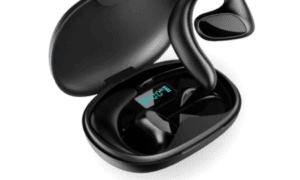Adhesive tapes are basic tools for packaging operations and performing easy maintenance duties inside and outside homes and offices. Everyone requires adhesive tapes for various purposes, yet few people have studied their lifespans. Understanding the duration of adhesive tapes remaining usable stands as a critical factor, regardless of whether you need to buy large quantities or plan occasional tape usage. You can discover an extensive choice of high-quality adhesive tapes at https://mytapestore.com.au/.
This article examines tape effectiveness duration and teaches you how to maximise tape roll benefits.
What Affects the Shelf Life of Adhesive Tapes?
The period of adhesive tape longevity depends on multiple influencing factors. The primary ones are:
- Type of Tape: The period of effectiveness differs according to the variety of adhesive tape used. Different adhesive tapes include duct tape, masking tape, and packing tape, which vary in durability. Double-sided foam tapes exist as durable tape types that outlast general-use tapes.
- Storage Conditions: Storing tape according to proper methods determines its ultimate lifespan. The longest preservation of adhesive tape properties comes from keeping these tapes in dry and warm environments that stay out of direct contact with heat and sunlight. The adhesive becomes less effective when exposed to extreme temperatures since it softens after heating and hardens in cold conditions.
- Quality of the Tape: The shelf life of adhesive tapes is generally longer when they come from reputable brands that use superior materials. Purchasing high-quality tape proves to have greater benefits because its effective adhesive functions will remain usable for extended periods.
- Material of the Tape: Purolap tape manufacturers create products from three main substance categories: plastic tape, fabric tape together, and paper tape. The life expectancy of adhesive depends on the choice of material it uses. The duration in which paper-based tapes maintain their effectiveness will typically be shorter compared to plastic-based tapes.
Shelf Life of Common Adhesive Tapes
The following estimated time frames show how several common adhesive tapes have different storage durations:
Packing Tape: Durable Packing Tape uses materials of polypropylene or polyester that can provide its adhesive strength for 1 to 3 years if stored in correct conditions. Before using them, you need to check the sticky nature of packing tapes and seal boxes and packages.
Duct Tape: Duct tape has very good adhesive strength, but it is still weaker than other packing tapes when it comes to durability. Firstly, the storage time span of duct tape is one to two years before the date of expiration. Exposure to heat or moisture makes its adhesive property deteriorate and this also makes this adhesive property less sticky, more soft and weak with time.
Masking Tape: Masking tape is useful not only in painting projects but also arts and craft works. When it is stored properly in a dry environment at cool conditions, masking tape is useful for one year. Its adhesiveness diminishes with time until the tape does not meet the demands for strong binding.
Double-Sided Tape: This adhesive tape serves as a bond medium for joining two surfaces that require going together. This tape will last for 2 to 5 years, but this depends on the storage condition and quality of the tape. If you are relying on masking tape as a means to stick a picture to your craft project, you will need adhesive strength that continues to be reliable.
Painter’s Tape: Painter’s tape continues to provide sharp paint edge lines for approximately 2 years before the adhesive strength degrades. After this period, the paint peels off because the adhesive cedes out its strength.
How Can You Tell if Your Tape Has Expired?
Determining if your adhesive tape has reached the end of its lifespan will help you avoid unnecessary frustration, particularly during task execution. Several indicators can show that your adhesive tape has reached the end of its usable lifespan.
Weak Adhesive: The main indicator that your tape has reached its expiration date is when it fails to adhere properly to surfaces. Weak adhesive strength and poor surface binding indicate the adhesive has surpassed its expiration date.
Dry or Brittle Tape: When tape edges turn hard or fragile, it demonstrates that the adhesive has become ineffective. Tapes located in hot and dry storage environments exhibit these signs.
Yellowing or Discoloration: The ageing process of clear packing tape often reveals yellow discolouration. Long-term exposure to heat or light causes tape adhesive properties to deteriorate, thus leading to discolouration.
Peeling or Lifting: An adhesive tape’s peeling behaviour from the surface indicates complete adhesive dryness. Tape that remains old or receives improper storage tends to develop this issue.
How to Extend the Shelf Life of Adhesive Tapes
To extend the operational lifetime of your adhesive tapes, use these easy storage recommendations:
Store Tapes Properly: Keep storing adhesive tapes within a dry and cold environment protected from heat and sunlight. High or low temperatures cause adhesive breakdown which shortens the tape’s useful time.
Avoid Humidity: The performance of adhesive tapes is negatively influenced by high moisture levels in the surrounding area. Place your adhesive tapes where moisture cannot reach because exposure to water can deteriorate the adhesive.
Seal the Ends: The tape roll ends should be secured with small pieces from the same roll to keep it clean and avoid unrolling. The tape adhesive stays clean and functional for an extended period when kept covered.
Don’t Expose to Excessive Handling: Pulling tape from drawers numerous times creates excessive wear that diminishes its effectiveness. Regular handling of tape should be minimised to sustain its glue power.
How to Use Tape Efficiently
Several tips will help you extend the lifespan of adhesive tapes so they work better for you.
Use the Right Tape for the Job: Each workplace task demands unique tape varieties for efficient application. Using packing tape for arts and crafts activities will result in poor performance. Your task performance improves when you use the appropriate tape selection for the work requirement.
Apply Tape to Clean Surfaces: The correct function of tape depends on keeping surfaces completely dust-free and devoid of moisture and dirt. You should clean the area followed by tape application to ensure a secure bond.
Avoid Overuse: Avoid using tape more than necessary for scenarios which do not require it. Using tape excessively will shorten its useful time while simultaneously creating unnecessary product waste.
Conclusion
The shelf life of adhesive tapes can vary depending on several factors, including the type of tape, storage conditions, and quality. However, with proper care, you can extend the shelf life of your tape and ensure it performs well when needed.
By following the simple tips in this blog, you can maximise the lifespan of your tapes and get the best results from your adhesive products. Keep in mind that not all tapes last forever, so make sure you use fresh rolls when necessary.



































